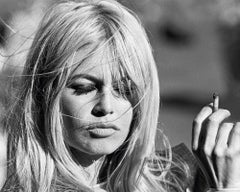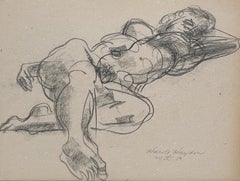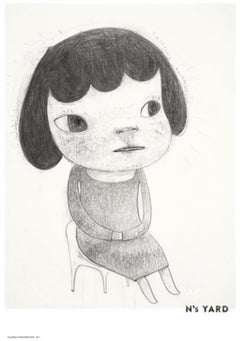Head Art
1960s Modern Black and White Photography
Photographic Paper, Silver Gelatin
1890s Victorian Portrait Paintings
Oil
1970s Pop Art Black and White Photography
Silver Gelatin
Late 19th Century Pre-Raphaelite Nude Paintings
Oil
Mid-20th Century American Modern Nude Drawings and Watercolors
Paper, Charcoal
2010s Figurative Prints
Paper
21st Century and Contemporary Expressionist Figurative Paintings
Canvas, Acrylic
21st Century and Contemporary Contemporary Figurative Paintings
Canvas, Acrylic
1960s Modern Figurative Prints
Etching
2010s Contemporary Figurative Photography
Archival Pigment
1890s Prints and Multiples
Lithograph
16th Century Old Masters Paintings
Oil
1970s Modern Figurative Paintings
Oil, Canvas
1980s Contemporary Figurative Photography
Photogravure
1960s Prints and Multiples
Screen, Lithograph, Paper
2010s Realist Figurative Paintings
Cotton Canvas, Acrylic
Early 2000s Young British Artists (YBA) Prints and Multiples
Glaze, Screen
2010s Contemporary Color Photography
Rag Paper, Archival Pigment
Late 20th Century Impressionist Portrait Paintings
Canvas, Oil
Early 20th Century Black and White Photography
Platinum
21st Century and Contemporary Figurative Paintings
Oil, Panel
1930s Modern Figurative Prints
Lithograph, Stencil
19th Century Figurative Sculptures
Bronze
1920s Ashcan School Figurative Paintings
Oil, Wood Panel
1980s Contemporary Figurative Drawings and Watercolors
Paper, Charcoal, Pastel
18th Century Baroque Figurative Paintings
Canvas, Oil
1930s Modern Figurative Photography
Black and White, Silver Gelatin
1950s American Modern Nude Drawings and Watercolors
Graphite, Paper
2010s Contemporary Drawings and Watercolor Paintings
Paper, Pastel, Graphite
2010s Abstract Portrait Drawings and Watercolors
Archival Ink
1970s Abstract Expressionist Figurative Paintings
Paper, Charcoal, Watercolor
1980s Neo-Expressionist Figurative Drawings and Watercolors
Oil Pastel, Mixed Media, Paper
1970s Minimalist Figurative Prints
Offset
1970s Abstract Figurative Prints
Lithograph
2010s Contemporary Drawings and Watercolor Paintings
Pencil
15th Century and Earlier Figurative Sculptures
Stone
2010s Street Art Prints and Multiples
Paper
2010s Surrealist Nude Paintings
Oil, Panel
1980s Contemporary Figurative Prints
Offset
Late 20th Century Post-Modern Figurative Sculptures
Bronze
2010s Contemporary Figurative Paintings
Canvas, Acrylic
1930s Photorealist Portrait Photography
Photographic Paper, Silver Gelatin
1990s Modern Figurative Paintings
Acrylic
2010s Contemporary Nude Photography
Archival Pigment, Archival Paper
Artist Comments
"The flowers hide the face so that you don’t make assumptions about the model, you focus on the beauty of existence," states artist David Shepherd. "You appreciate that they are a person without any impressions of their character. When I compose a painting I think back to my childhood memories. It ties in with what I was saying above. When you’re a child it’s much easier to make friends and enjoy people. That innocence allows for such pure emotion. I always try and get back to that feeling when I’m composing my work."
About the Artist
Canadian artist David Shepherd fuses techniques from both old and modern masters to create contemporary interpretations of the human form. While offering strong nods to pop art and cubism, the work remains grounded by David’s training in 19th Century academic realism. Combining discrete techniques within a single tableau is initially jarring to the viewer, creating an unexpected visual complexity in the work and demonstrating the artist’s breadth of skills. “I think in the future we will be much more interested in works of art that show a mastery of multiple styles,” says David. Each artwork effectually suggests the surreal nature of human existence within a convoluted modern society.
Words that describe this painting: flowers, floral, portrait, realism, hyperrealism, photorealism, hyperreal, face, beauty, eye, rainbow, calm, calming, love, lips, people, large, people, flora, realism, oil painting, pink
Loose Lips...
21st Century and Contemporary American Realist Figurative Paintings
Oil
2010s Pop Art Black and White Photography
Black and White, Archival Pigment
2010s Contemporary Figurative Drawings and Watercolors
Paper, Ink, Mixed Media
1990s Pop Art Figurative Prints
Linocut
1960s Pop Art Black and White Photography
Silver Gelatin
2010s Contemporary Figurative Prints
Lithograph, Offset
Early 20th Century Impressionist Landscape Drawings and Watercolors
Ink, Paper, Watercolor
Mid-20th Century American Realist Figurative Sculptures
Paint, Wood
1980s Contemporary Figurative Drawings and Watercolors
Watercolor, Pencil
1830s Romantic Portrait Paintings
Watercolor
Artist Comments
Provocative hyperrealist oil painting created with breathtaking detail. Artist David Shepherd used water and flowers to create a feeling of life, and to serve...
21st Century and Contemporary American Realist Figurative Paintings
Oil
1950s Modern Nude Paintings
Canvas, Oil
Late 20th Century Abstract Expressionist Portrait Paintings
Canvas, Oil
1750s Old Masters Figurative Paintings
Oil
Early 20th Century Portrait Drawings and Watercolors
Paper, Watercolor
21st Century and Contemporary Surrealist Figurative Paintings
Oil, Canvas, Acrylic




